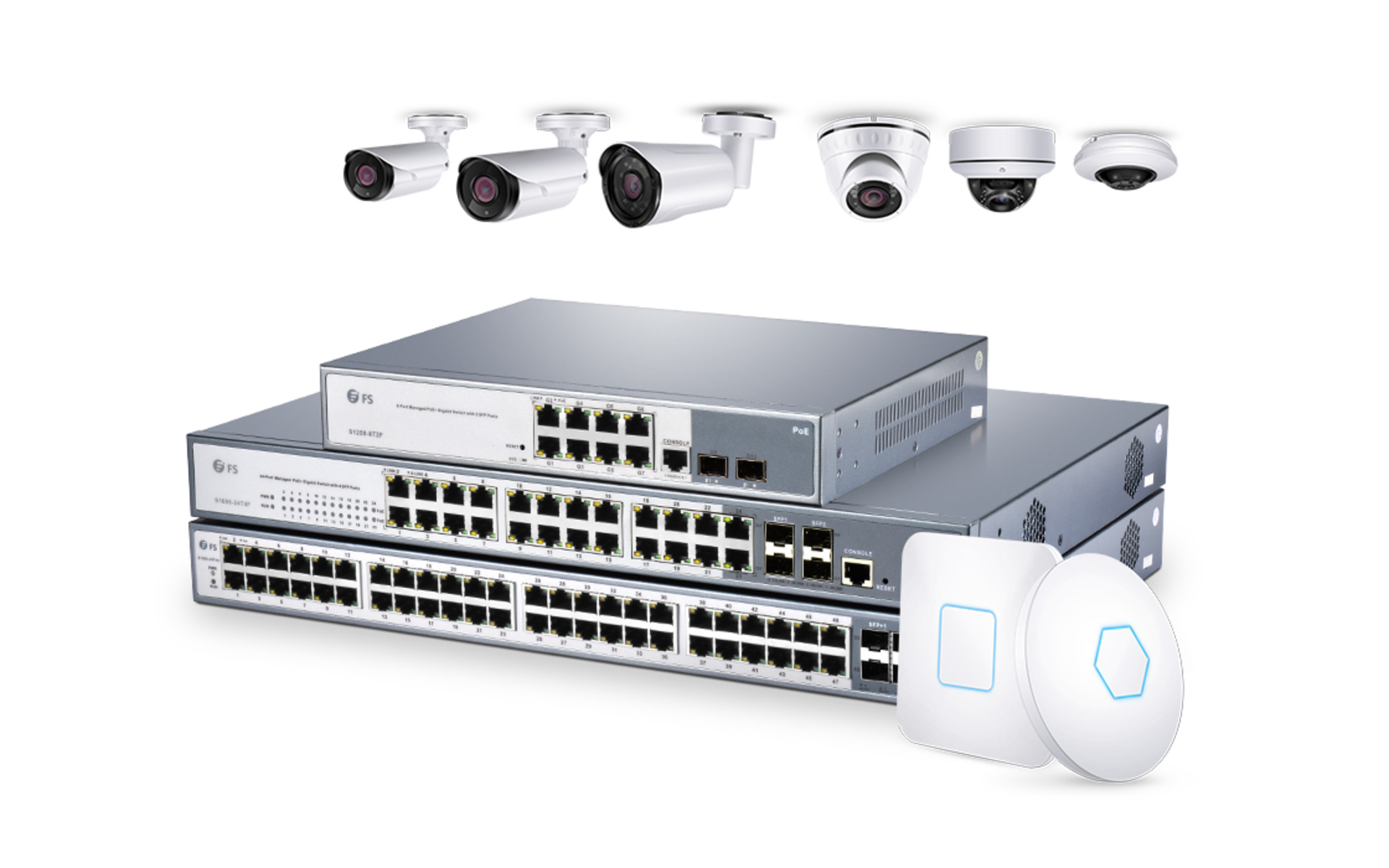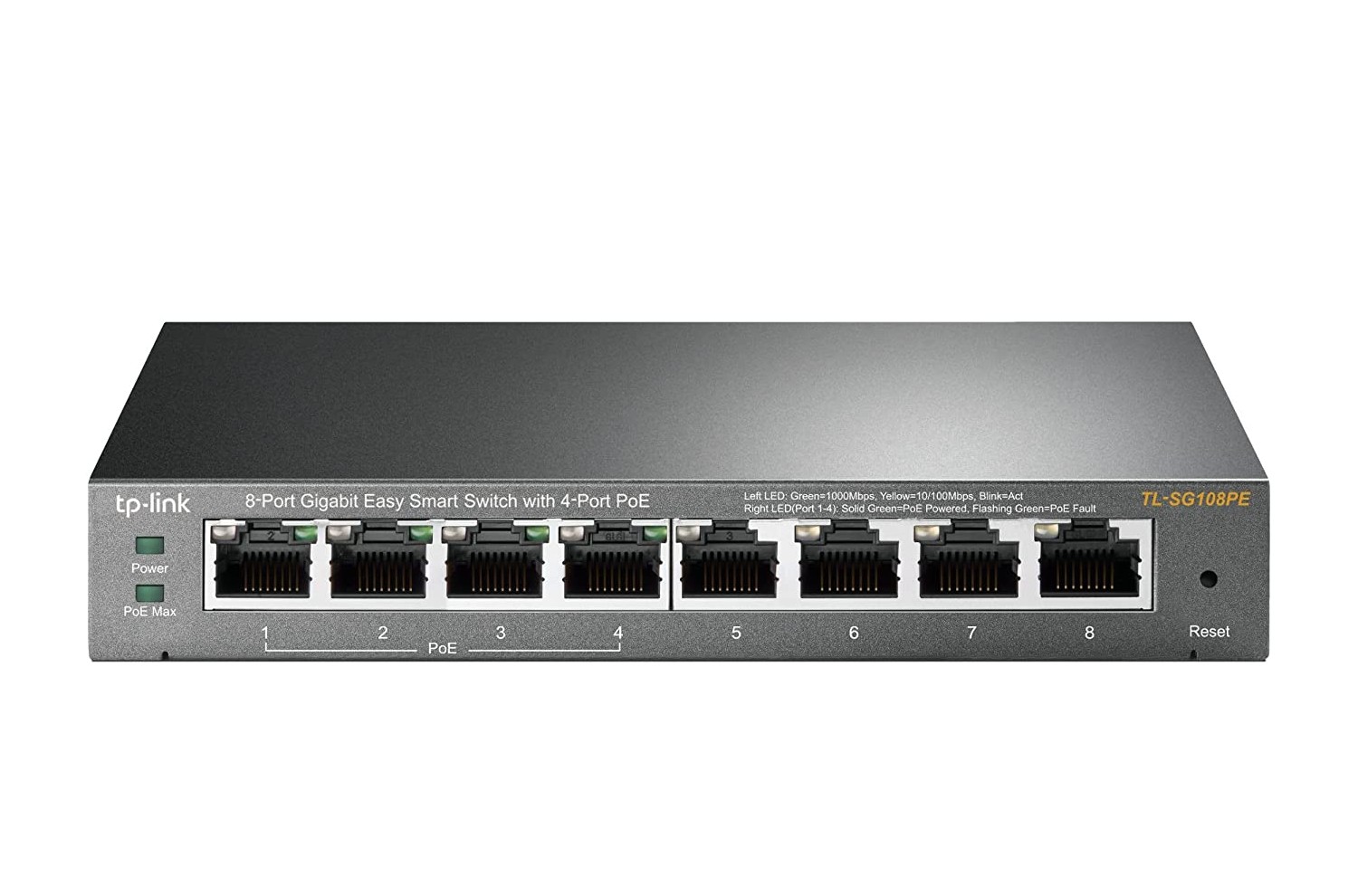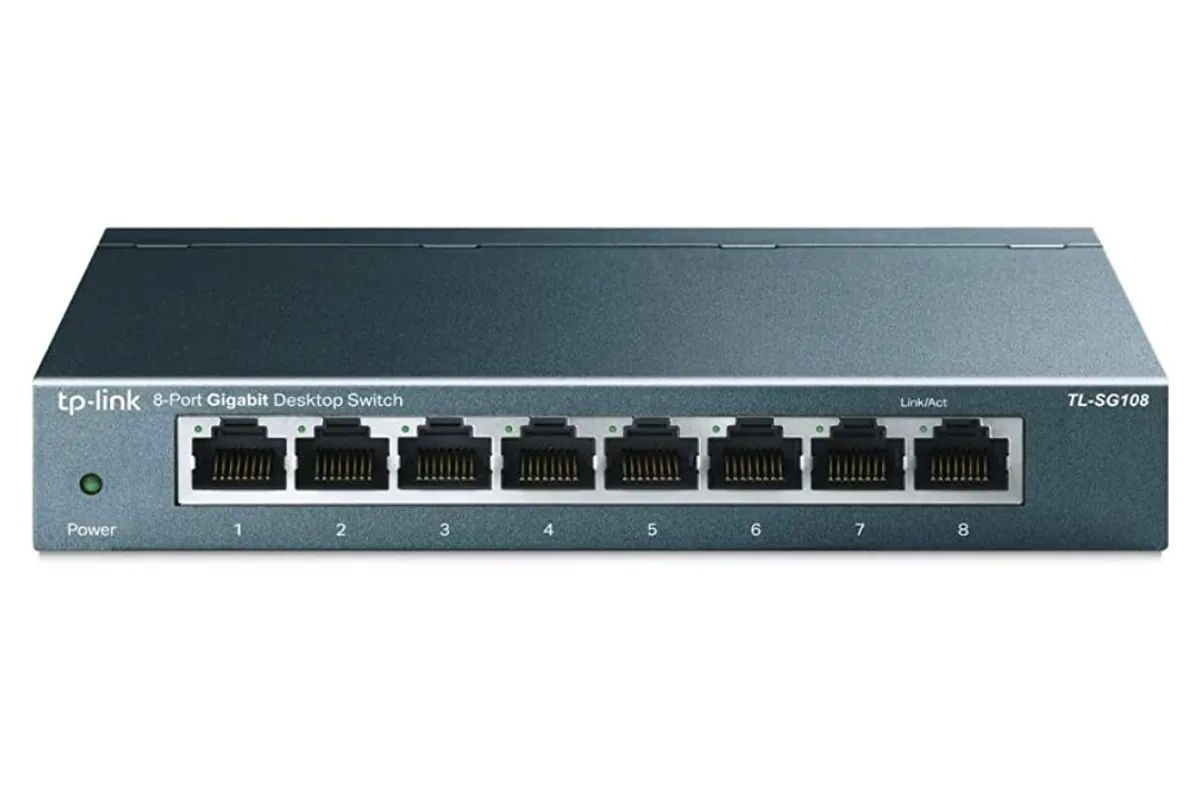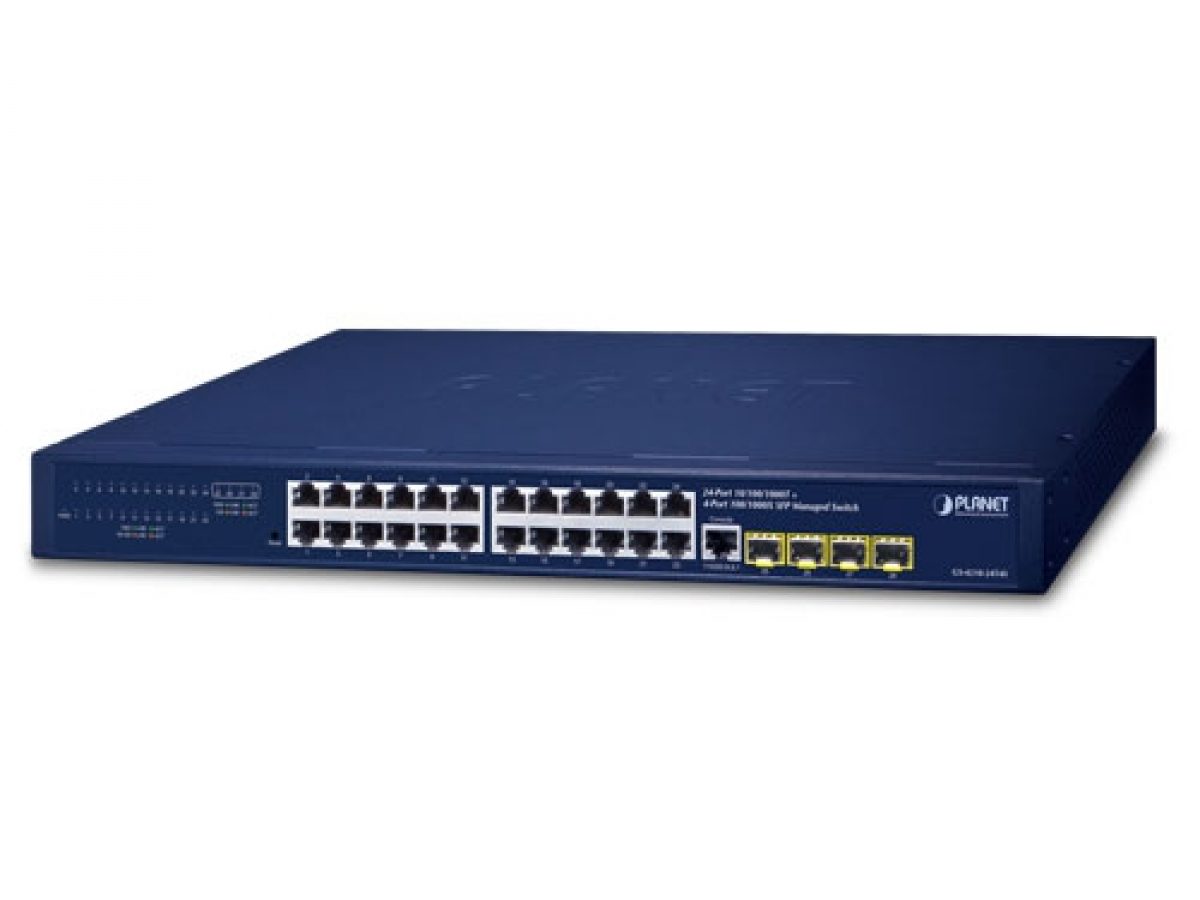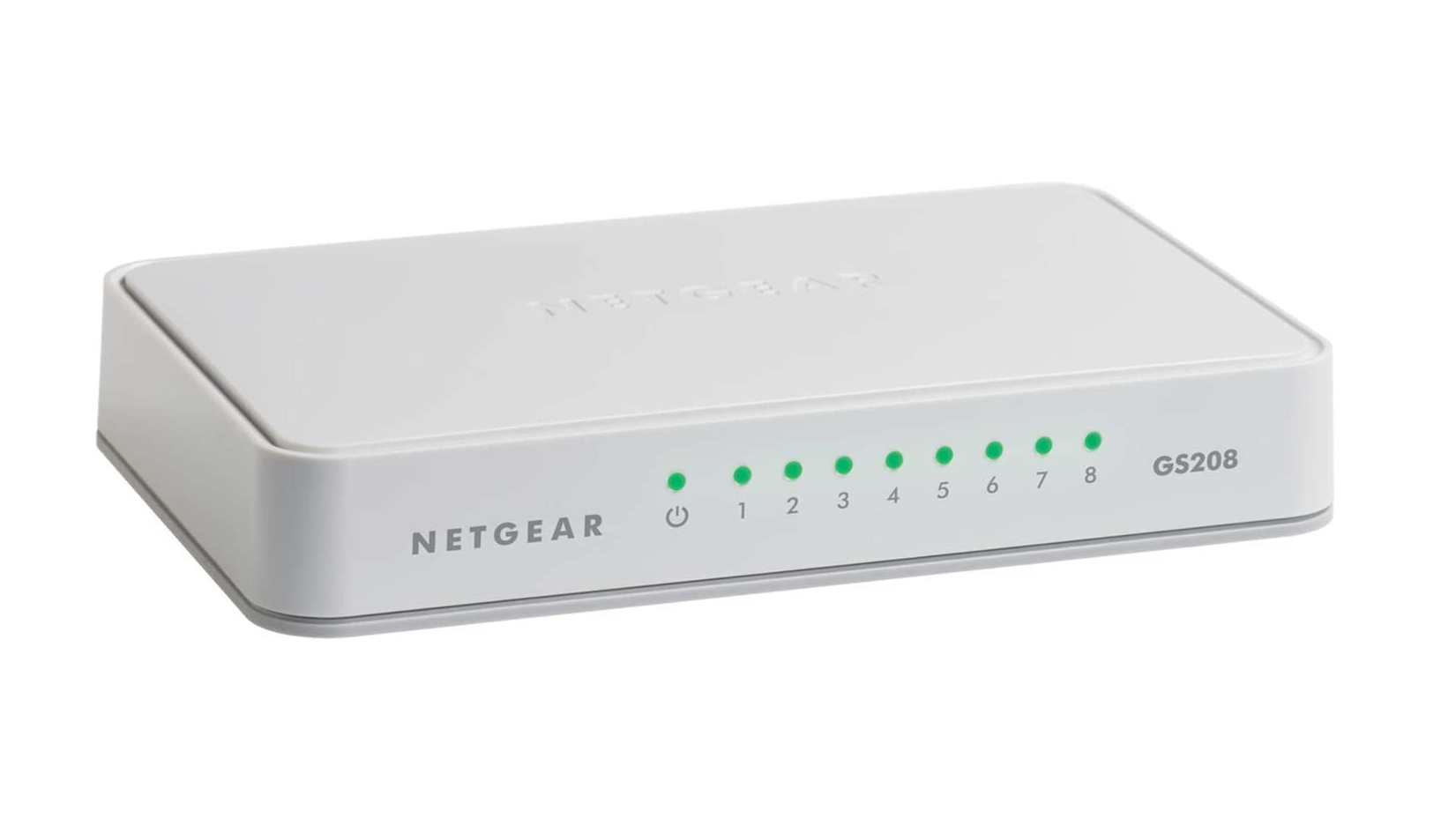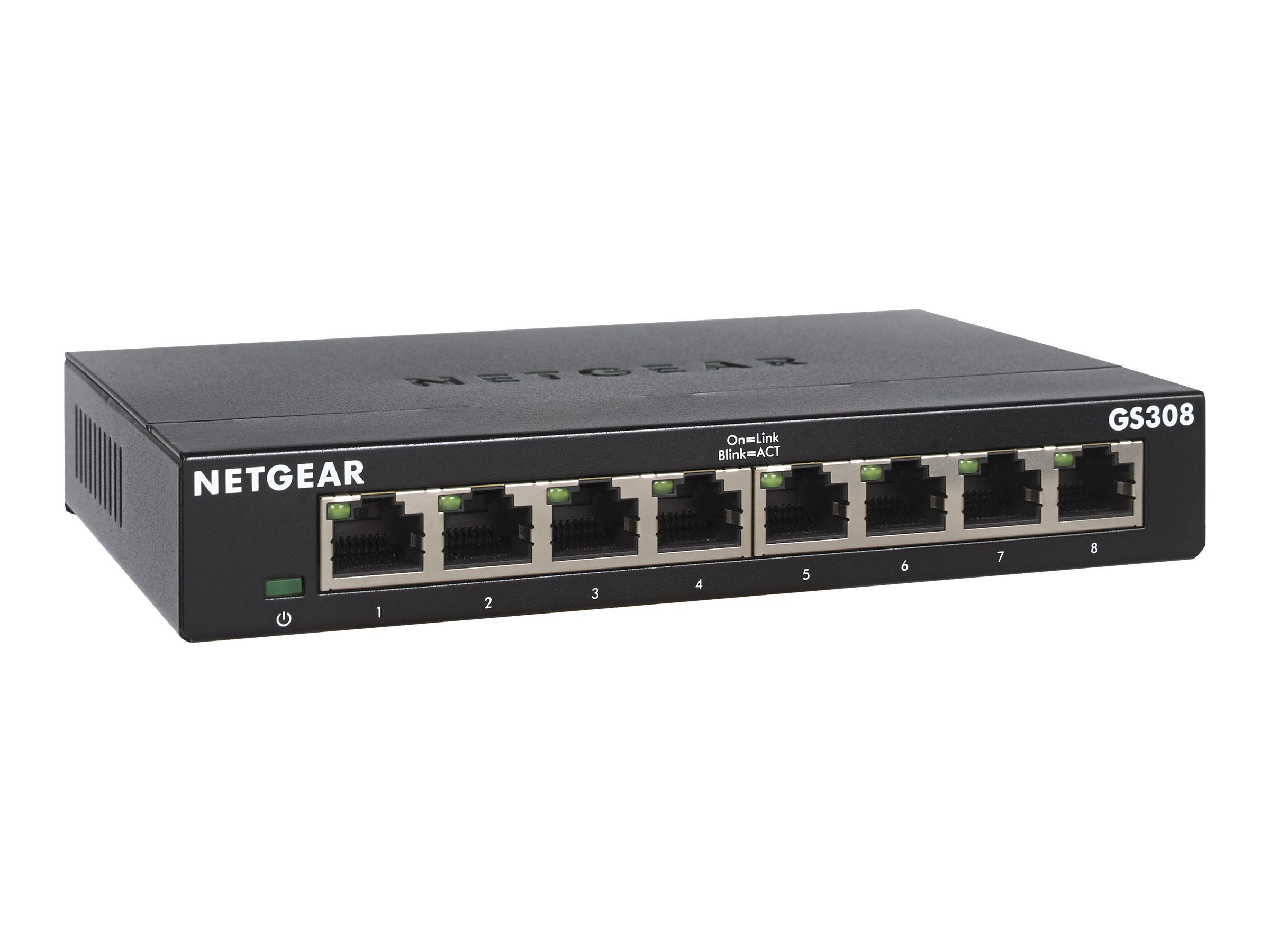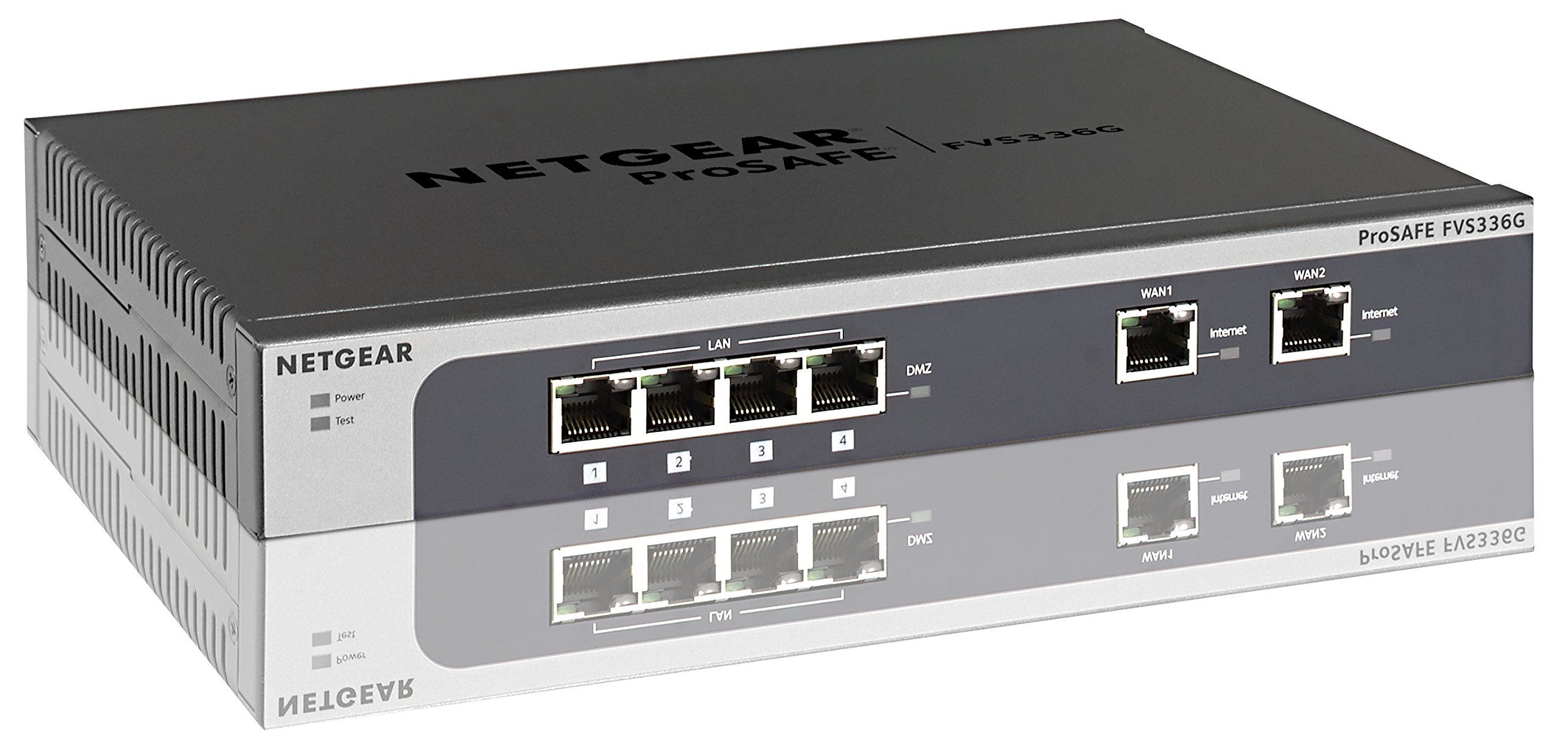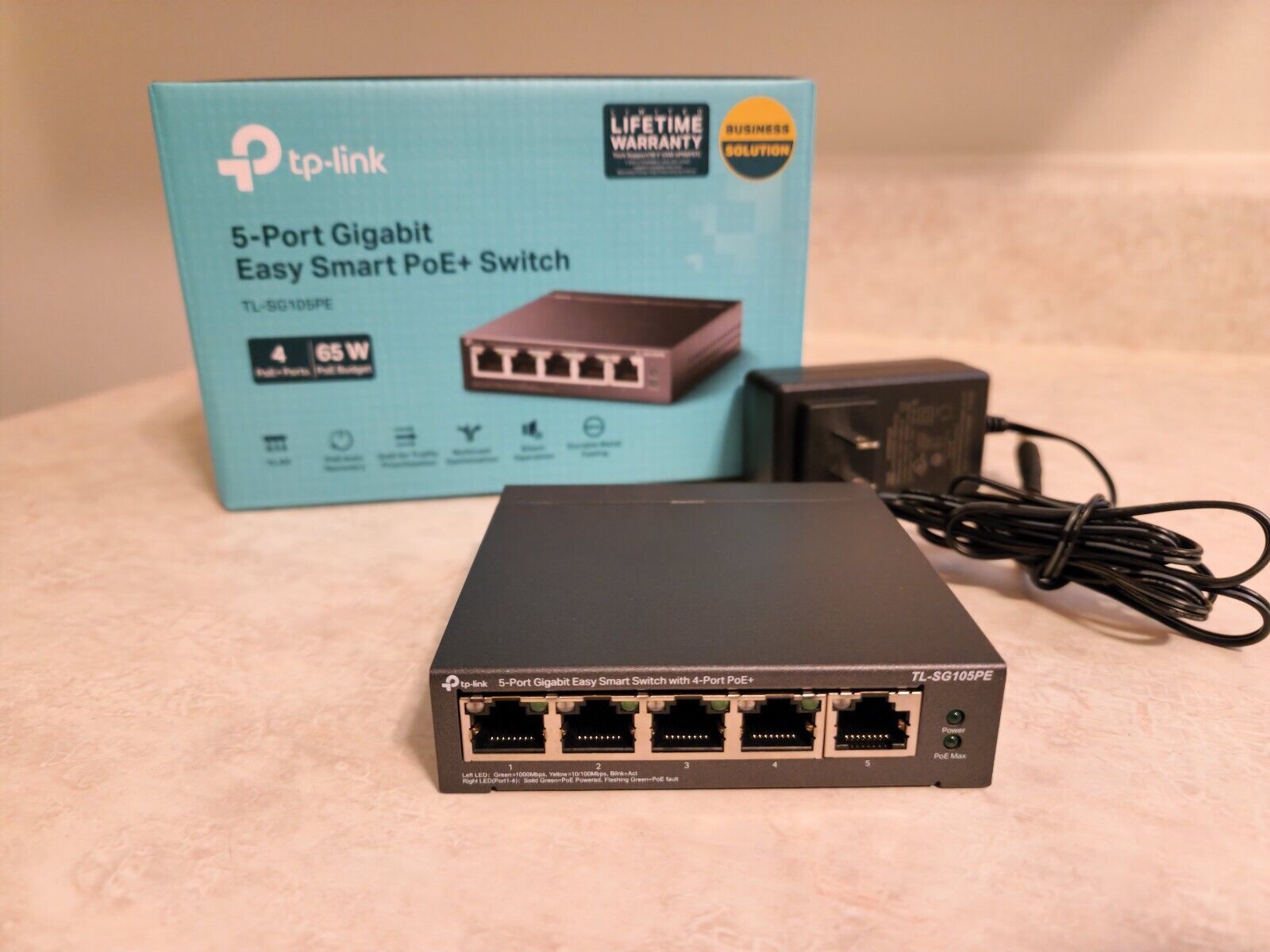Introduction
Welcome to the world of high-speed networking! As technology continues to advance, the demand for faster and more reliable network connections has become increasingly prevalent. In this digital age, where data transfer and communication are integral to both personal and professional endeavors, the need for efficient networking solutions is more crucial than ever. One such solution that has gained widespread popularity is the gigabit network switch.
A gigabit network switch serves as a cornerstone of modern network infrastructure, enabling seamless data transfer and connectivity across various devices within a network. Whether you're a seasoned IT professional or an enthusiastic tech enthusiast, understanding the role and functionality of a gigabit network switch can significantly enhance your networking capabilities.
In this comprehensive guide, we will delve into the intricacies of gigabit network switches, exploring their fundamental principles, operational mechanisms, benefits, types, and essential considerations for selecting the most suitable option for your specific networking needs. By the end of this journey, you will have gained valuable insights into the world of gigabit networking, empowering you to make informed decisions and optimize your network performance.
So, fasten your seatbelt and get ready to embark on an enlightening exploration of gigabit network switches, where we unravel the mysteries behind their operation, unravel the mysteries behind their operation, and unlock the potential for enhanced networking efficiency. Let's dive in!
What Is a Gigabit Network Switch?
A gigabit network switch is a vital networking device designed to facilitate the efficient transfer of data between multiple devices within a local area network (LAN). Unlike traditional hubs that simply broadcast data to all connected devices, a gigabit switch intelligently directs data packets only to the intended recipient, optimizing network performance and minimizing unnecessary traffic.
At its core, a gigabit network switch operates as a central connection point for various devices, such as computers, printers, servers, and other networked peripherals, allowing them to communicate with each other at incredibly high speeds. The term “gigabit” refers to the switch’s capability to support data transfer rates of up to 1 gigabit per second, significantly surpassing the speeds achievable with standard Ethernet switches.
One of the key distinguishing features of a gigabit network switch is its ability to provide dedicated bandwidth to each connected device, thereby preventing congestion and ensuring swift and reliable data transmission. This enhanced performance is particularly beneficial in environments where large volumes of data are exchanged, such as in businesses, educational institutions, and multimedia production settings.
Furthermore, gigabit switches are often equipped with multiple ports, typically ranging from 5 to 48 ports or more, enabling seamless connectivity for numerous devices within the network. These ports may include a combination of RJ45 Ethernet ports for wired connections and SFP (Small Form-factor Pluggable) ports for fiber optic or high-speed uplink connections, offering versatility to accommodate various networking requirements.
In essence, a gigabit network switch serves as the linchpin of a robust and agile network infrastructure, empowering organizations and individuals to harness the full potential of high-speed data transfer and seamless communication. Its role in streamlining network operations and enhancing overall productivity cannot be overstated, making it an indispensable component in modern networking setups.
How Does a Gigabit Network Switch Work?
Understanding the inner workings of a gigabit network switch unveils the intricate mechanisms that drive efficient data transmission within a network. At its essence, a gigabit switch operates by utilizing a method known as packet switching, which involves the intelligent forwarding of data packets based on their destination addresses.
When a device connected to the switch sends out data, the switch examines the destination MAC (Media Access Control) address of the data packet. Using this address, the switch determines the appropriate port through which the data should be forwarded to reach its intended recipient. Unlike traditional network hubs that indiscriminately broadcast data to all connected devices, a gigabit switch selectively directs data only to the specific device for which it is intended, thereby conserving bandwidth and optimizing network performance.
Furthermore, gigabit switches often incorporate advanced features such as Quality of Service (QoS) and VLAN (Virtual Local Area Network) support to further enhance network efficiency. Quality of Service allows the switch to prioritize certain types of data traffic, ensuring that time-sensitive applications, such as voice over IP (VoIP) or video streaming, receive precedence for seamless transmission. On the other hand, VLAN support enables the segmentation of a single physical network into multiple virtual networks, providing enhanced security, improved traffic management, and simplified network administration.
Additionally, the architecture of a gigabit switch is designed to facilitate full-duplex communication, allowing data to be transmitted and received simultaneously at gigabit speeds. This bidirectional data flow capability eliminates the need for devices to contend for network resources, thereby maximizing throughput and minimizing latency.
By harnessing these sophisticated mechanisms, a gigabit network switch serves as a pivotal enabler of high-speed, reliable data transfer within local area networks, empowering organizations and individuals to seamlessly communicate and collaborate across interconnected devices. Its ability to intelligently manage data traffic and provide dedicated bandwidth to each connected device positions it as a cornerstone of modern networking infrastructure.
Benefits of Using a Gigabit Network Switch
Employing a gigabit network switch offers a myriad of advantages that significantly enhance network performance, efficiency, and overall user experience. By leveraging the capabilities of a gigabit switch, organizations and individuals can unlock a host of benefits that propel their networking infrastructure to new heights of speed, reliability, and scalability.
- Rapid Data Transfer: A primary benefit of utilizing a gigabit network switch is the ability to achieve blazing-fast data transfer speeds of up to 1 gigabit per second. This accelerated data transmission empowers users to swiftly exchange large files, stream high-definition media, and engage in bandwidth-intensive applications without experiencing network congestion or latency.
- Enhanced Network Performance: Gigabit switches facilitate dedicated bandwidth allocation to each connected device, preventing data bottlenecks and ensuring consistently high performance across the network. This optimized traffic management minimizes packet loss and latency, enabling seamless communication and data exchange.
- Scalability and Flexibility: With a plethora of ports available on gigabit switches, users can effortlessly expand their network by connecting additional devices without compromising performance. The versatility of gigabit switches accommodates the evolving networking needs of businesses, educational institutions, and home users, providing scalability and adaptability to changing requirements.
- Support for Bandwidth-Intensive Applications: Gigabit switches are well-suited for environments where bandwidth-intensive applications, such as video conferencing, multimedia streaming, and large-scale data transfers, are prevalent. The robust data handling capabilities of gigabit switches ensure seamless operation of these demanding applications, fostering productivity and collaboration.
- Improved Security and Traffic Segmentation: Many gigabit switches feature VLAN support, enabling the creation of distinct virtual networks within a single physical network. This segmentation enhances network security, isolates traffic for specific purposes, and simplifies network management, bolstering overall data protection and operational efficiency.
- Future-Proof Networking: By harnessing the advanced speeds and capabilities of gigabit switches, users future-proof their network infrastructure, ensuring that it can readily accommodate the increasing demands of evolving technologies and applications. This forward-looking approach safeguards investments and minimizes the need for frequent network upgrades.
These compelling benefits underscore the indispensable role of gigabit network switches in modern networking environments, offering a potent combination of speed, reliability, and adaptability that empowers users to harness the full potential of their interconnected devices and applications.
Types of Gigabit Network Switches
Gigabit network switches are available in various configurations and form factors, each tailored to meet specific networking requirements and deployment scenarios. Understanding the different types of gigabit switches is essential for selecting the most suitable option that aligns with the unique demands of a given network environment. Let’s explore the primary types of gigabit network switches:
- Unmanaged Gigabit Switches: Unmanaged gigabit switches are plug-and-play devices that operate without the need for manual configuration. They are ideal for small office or home environments where simplicity and ease of use are paramount. These switches provide basic network connectivity and are typically cost-effective, making them a popular choice for entry-level networking setups.
- Managed Gigabit Switches: Managed gigabit switches offer advanced features and extensive configurability, allowing network administrators to exert precise control over network operations. These switches enable the implementation of VLANs, Quality of Service (QoS) settings, port mirroring, and other sophisticated functions, making them well-suited for enterprise, campus, and data center deployments that demand granular network management capabilities.
- Layer 2 Gigabit Switches: Layer 2 gigabit switches operate at the data link layer of the OSI model, providing essential network switching functions such as MAC address learning, VLAN support, and link aggregation. They are adept at facilitating high-speed data transfer within local networks and are commonly utilized in business environments for interconnecting network devices and ensuring efficient traffic forwarding.
- Layer 3 Gigabit Switches: Layer 3 gigabit switches offer the advanced routing capabilities of traditional routers in addition to standard layer 2 switching functionality. These switches can perform IP routing, support dynamic routing protocols, and facilitate inter-VLAN routing, making them invaluable for complex network architectures that necessitate efficient routing and traffic management.
- Stackable Gigabit Switches: Stackable gigabit switches are designed to be interconnected and managed as a single, unified entity, forming a stacked switch system. This configuration enables enhanced scalability, simplified management, and increased resiliency by allowing multiple switches to operate as a cohesive unit. Stackable switches are commonly utilized in enterprise networks that demand seamless expansion and robust redundancy.
- Power over Ethernet (PoE) Gigabit Switches: PoE gigabit switches integrate Power over Ethernet functionality, enabling them to deliver power to connected devices, such as IP phones, wireless access points, and surveillance cameras, over the Ethernet cabling. These switches eliminate the need for separate power sources for PoE-enabled devices, simplifying installation and enhancing deployment flexibility.
By comprehensively understanding the diverse categories of gigabit network switches, network administrators and users can make informed decisions when selecting the most appropriate switch type to meet their specific networking needs, ensuring optimal performance, manageability, and scalability.
Considerations When Choosing a Gigabit Network Switch
When embarking on the selection of a gigabit network switch, several crucial considerations come into play to ensure that the chosen switch aligns with the unique requirements and operational dynamics of the intended network environment. By carefully evaluating these factors, users can make informed decisions that optimize network performance, scalability, and cost-effectiveness. Here are the key considerations to keep in mind:
- Port Count and Configuration: Assess the number of devices that need to be connected to the switch, both presently and in the foreseeable future. Determine the required port count and consider the need for additional uplink or fiber optic ports to accommodate diverse networking requirements.
- Throughput and Speed Requirements: Evaluate the anticipated data transfer needs of the network, taking into account the volume of traffic and the demand for high-speed connectivity. Ensure that the selected switch offers the requisite throughput and gigabit speeds to sustain optimal network performance.
- Managed vs. Unmanaged: Determine whether the network demands advanced management features and configurability. For complex environments requiring precise control over network operations, a managed gigabit switch may be essential, whereas smaller setups may suffice with an unmanaged switch.
- Power over Ethernet (PoE) Capability: If the network incorporates PoE-enabled devices, such as IP phones or surveillance cameras, consider opting for a PoE gigabit switch to streamline power delivery and simplify device installation.
- Quality of Service (QoS) Support: Assess the need for prioritizing specific types of network traffic, such as voice or video data, to ensure seamless transmission. A gigabit switch with QoS capabilities can optimize the handling of critical data and applications.
- Scalability and Stacking: Anticipate future network expansion and consider the potential for stacking multiple switches to form a unified, scalable system. Stackable gigabit switches provide enhanced flexibility and management capabilities for growing networks.
- Layer 2 vs. Layer 3 Functionality: Evaluate the necessity for advanced routing and inter-VLAN capabilities. Layer 3 gigabit switches are indispensable for networks requiring robust routing and traffic management features beyond standard layer 2 switching.
- Budget and Total Cost of Ownership (TCO): Consider the initial acquisition cost of the switch as well as the long-term operational expenses. Assess the total cost of ownership, factoring in energy efficiency, maintenance requirements, and potential future upgrades.
By carefully weighing these considerations and aligning them with the specific networking needs and growth projections, users can make informed decisions when selecting a gigabit network switch, ensuring that it seamlessly integrates into the network ecosystem and delivers optimal performance and scalability.
Conclusion
In the realm of modern networking, the gigabit network switch stands as a pivotal enabler of high-speed data transfer, seamless communication, and agile network management. Its ability to intelligently direct data traffic, provide dedicated bandwidth, and support a myriad of advanced features positions it as an indispensable asset for businesses, educational institutions, and home users alike.
By unraveling the intricacies of gigabit network switches, we have gained a profound understanding of their fundamental principles, operational mechanisms, and diverse applications. From the rapid data transfer and enhanced network performance to the scalability, security, and advanced functionality they offer, gigabit switches emerge as catalysts for unlocking the full potential of interconnected devices and applications within local area networks.
As technology continues to evolve and networking requirements become increasingly demanding, the significance of selecting the right gigabit network switch cannot be overstated. By carefully considering factors such as port count, throughput, management capabilities, and future scalability, users can make informed decisions that align with their specific networking needs, ensuring optimal performance, reliability, and cost-effectiveness.
In essence, the gigabit network switch serves as the cornerstone of a robust and agile network infrastructure, empowering users to harness the full spectrum of high-speed, reliable data transfer and communication. Its role in streamlining network operations, enhancing productivity, and future-proofing networking investments underscores its profound impact on the digital landscape.
As we navigate the ever-evolving terrain of networking technology, the gigabit network switch remains a steadfast ally, driving connectivity, collaboration, and innovation across diverse domains. With its unwavering commitment to facilitating seamless data exchange and empowering interconnected ecosystems, the gigabit network switch continues to shape the fabric of modern networking, propelling us toward a future of boundless connectivity and unparalleled efficiency.







